
DIVORCE CASUALTIES

DIVORCE CASUALTIES
Understanding Parental Alienation
Second Edition
Douglas Darnall, Ph.D.

Copyright 2008 by Douglas Darnall
All rights reserved. No part of this book may be reproduced in any form or by any electronic or mechanical means, including information storage and retrieval systems, without written permission from the publisher, except by a reviewer who may quote passages in a review.
Published by Taylor Trade Publishing
An imprint of The Rowman & Littlefield Publishing Group, Inc.
4501 Forbes Boulevard, Suite 200, Lanham, Maryland 20706
www.rlpgtrade.com
Estover Road, Plymouth PL6 7PY, United Kingdom
Distributed by NATIONAL BOOK NETWORK
Library of Congress Cataloging-in-Publication Data
Darnall, Douglas.
Divorce casualties : understanding parental alienation / Douglas Darnall2nd ed.
p. cm.
Includes bibliographical references and index.
ISBN-13: 978-1-58979-376-7 (pbk. : alk. paper)
ISBN-10: 1-58979-376-5 (pbk. : alk. paper)
1. Children of divorced parents. 2. Divorced parents. 3. Joint custody of childrenPsychological aspects. 4. Parenting. I. Title.
HQ777.5.D37 2008
306.89dc22
2008020576
 The paper used in this publication meets the minimum requirements of American National Standard for Information SciencesPermanence of Paper for Printed Library Materials, ANSI/NISO Z39.48-1992.
The paper used in this publication meets the minimum requirements of American National Standard for Information SciencesPermanence of Paper for Printed Library Materials, ANSI/NISO Z39.48-1992.
Manufactured in the United States of America.
To mothers and fathers
for encouraging their children
to have loving and healthy relationships
with their other families

Contents
Acknowledgments
The success of the first edition of Divorce Casualties has strengthened my commitment to helping families manage the perils of high-conflict divorce. The second edition is possible because of the efforts of committed mental health and legal professionals, authors, and researchers who have since contributed to our knowledge about how to work with these families. Because of all that has been learned since the first publication, this revision is the first of two books: The second will address treatment and reunification. I cannot say enough about how grateful I am for the families that have shared their stories and experiences which have contributed to this offering.
Many of my dearest friends have helped me with editing and offering suggestions about the contents of the book. Words cannot express my gratitude. I wish to thank Barbara Steinberg, Ph.D. for her contribution on grief; Amy Baker, Ph.D. for her valuable critiques; Terry Heltzel, Ph.D.; Mary Geidner; Michele Hawn, M.S., L.P.C.C.; Marilyn Burns, M.Ed., L.P.C.C.; Deirdra Petrich, Ph.D., L.P.C.C.; Desiree Gomez, B.A.; Terry Smith, M.Ed., L.P.C.C.; Attorney Lane Harvey; Claudette and David Summers for their editing skills; Attorney Glennon Karr for his critique on the legal and ethics chapter; and, of course, my agent and friend Denise Marcil.
I am grateful to my parents, Paul and Jan Tanner, for sharing their wisdom and experiences. Paul, a retired professor at U.C.L.A., has published many books on music and was a member of the original Glenn Miller Orchestra. In addition, I am grateful to my mother for all her support and encouragement over the years. Their advice and support has been invaluable.
My wife, Jan, has sacrificed a lot, with my many late hours working on the revision and the second book. My daughtersBrianna, a law student at Duquesne University Law School; and Lindsey, a research technician at Cleveland Clinic Foundationhave been great and are always a source of support. I love them for standing beside me.
Introduction
The premise of the first edition of Divorce Casualties was to educate parents about the symptoms of parental alienation and teach them how to prevent the more severe consequences of parental alienation syndrome for their children. The first edition left the reader with very little hope for reversing the deleterious effects of parental alienation syndrome upon the children and rejected parent. The only hope offered was for the parent to understand parental alienation syndrome in order to prevent it. Much has been learned since the first edition. The original premise is still true today, but there is more reason for optimism in preventing alienation and repairing damaged relationships.
There were shortcomings to the first edition of Divorce Casualties: Protecting Your Children from Parental Alienation. The focus was on parental alienation, with little consideration of alternative explanations for severe parent/child conflicts. Parents feeling rejected and persecuted by the other parent sometimes do not take into account their own contribution to the parent/child tensions. Little was known about spontaneous reunification, the role of parent coordinators, and reunification therapy when Divorce Casualties was initially written.
During the past ten years since the writing of first edition, parental alienation and parental alienation syndrome have unfortunately become a political issue. The terms, and the very existence of the phenomenon, have been attacked in some courts and state legislative bodies by politically motivated parent groups and by angry parents feeling persecuted by the allegations raised against them. Just as there are false allegations of abuse, there are false allegations of parental alienation. No one with experience in domestic relationships denies the existence of parents who, consciously or unconsciously, attempt to alienate the children and would just as soon eliminate the rejected parent from their and the childrens lives. Fortunately, this is a small number of cases, but these are the cases that continually reappear in court. They consume tremendous court resources, at great cost to the families. I have heard parents say many times, The cost of litigation could have paid for my childs college education. This is, sadly, true. Then there are those who argue that parental alienation and parental alienation syndrome are nothing more than junk science and an attempt to protect an abusive parent from a protective parent. This second edition will clarity and refute these accusations. Whatever you want to call parental alienation and parental alienation syndrome, the phenomena are real. Arguing against their existence in court is nothing more than a damaging diversion to avoid facing the issue.
Children are often caught in the emotional crossfire when parents divorce or separate. Many couples continue to fight bitterly for years after a divorce, especially over such issues as child support and visitation (referred to in this book as parenting time). Yet research has repeatedly shown that childrens adjustment and mental health depend directly on how well their parents protect the children from conflict. This edition expands the summary of research supporting the importance of both parents being actively involved in raising the children. Parents who, consciously or unconsciously, sabotage their childrens relationship with the other parent for revenge on their ex-spouse will learn how their behavior can cause lasting damage to the children.
Next page


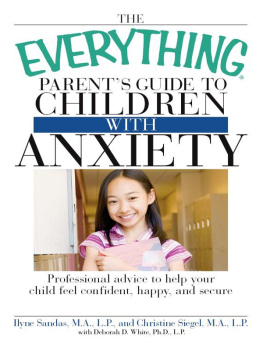
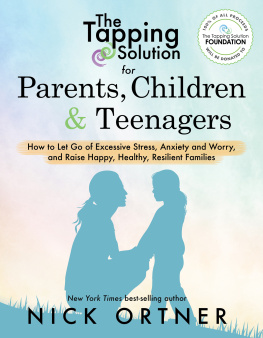
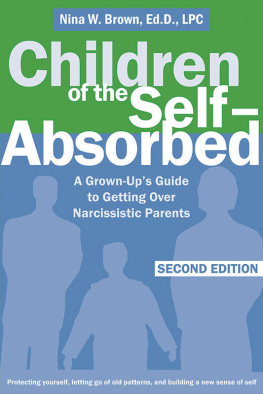
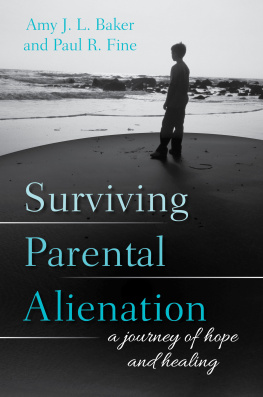
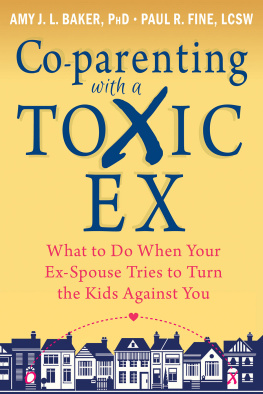
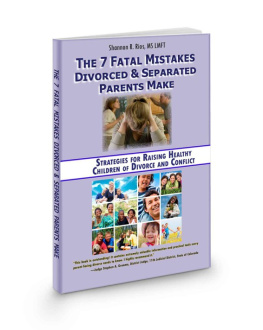


 The paper used in this publication meets the minimum requirements of American National Standard for Information SciencesPermanence of Paper for Printed Library Materials, ANSI/NISO Z39.48-1992.
The paper used in this publication meets the minimum requirements of American National Standard for Information SciencesPermanence of Paper for Printed Library Materials, ANSI/NISO Z39.48-1992.